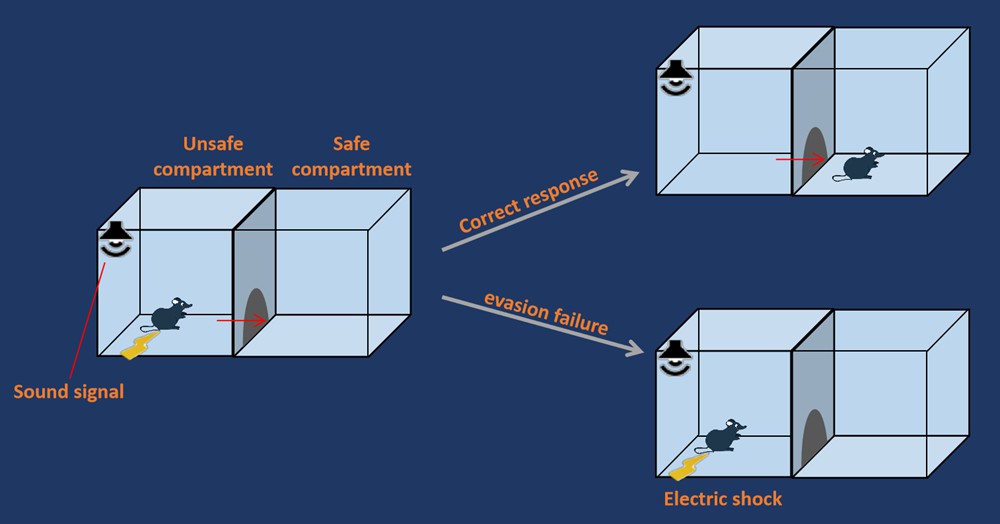Learned Helplessness Test
The learned helplessness test is a more ideal experimental method to evaluate depressive behavior. The theoretical basis of the model is derived from Beck's cognitive theory of depression.
Our company's scientific team has many years of experience in animal behavioral tests, which allows us to provide our clients with efficient and customized learned helplessness test. We are committed to providing ideal testing services for depression-related research, helping clients advance the screening and evaluation of antidepressant drugs.
Experimental Principle
The principle of the learned helplessness test is that after forcing experimental animals to receive continuous uncontrollable electric shock stimuli, the animals become desperate. The main manifestations are no longer avoidance of the electric shock stimulus, accompanied by behaviors such as decreased appetite, reduced activity, and reduced aggressiveness. These behavioral changes are similar to human depression and are recognized as a depressive state. Antidepressants can counteract that state.
 Fig. 1 Principle of the learned helplessness test.
Fig. 1 Principle of the learned helplessness test.
Experimental Flow
The testing process of the learned helplessness experiment is divided into two main parts: model building and conditioned response testing. Our company can provide customized testing solutions based on the customers' research demands.
- Model establishment
Before the test, the experimental animals were acclimatized in the electric shock chamber for 5 min.
Experimental animals receive periodic cyclic electrical stimulation in an electroshock chamber.
- Conditional testing
24 hours after model establishment, the experimental animals were placed at one end of the shuttle box and allowed to acclimate to the test environment for 5 min.
The experimental animals were placed into the side of the shuttle box, given light or sound signals, and observed for their evasive responses.
If no escape response occurred, after the signal stopped, the animal was given an electric shock to the foot, and whether the escape response occurred was observed and recorded.
 Fig. 2 Schematic diagram of the learned helplessness test.
Fig. 2 Schematic diagram of the learned helplessness test.
Parameter Indexes
| Indexes | Description |
|---|---|
| Times of evasion failures | The total number of times the animal did not complete the avoidance response within the set duration of the unconditioned stimulus. |
| Escape latency | The time of the 1st shuttle of the animal to the opposite side of the test chamber. |
| Other indexes: number of active recusals, total movement time, total movement distance. | |
Applications
We provide our clients with high quality learned helplessness test for depression-related disease and drug research applications, including but not limited to the following.
- Research on the pathogenesis of depression.
- Development of new drugs and healthcare products.
- Military medical research.
Our company offers professional one-stop services from experimental design to results analysis to bring breakthroughs to your research. We guarantee on-time delivery of test results. If you need, you can contact us at any time.